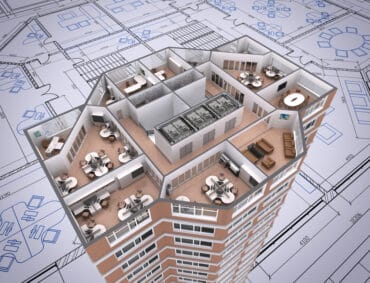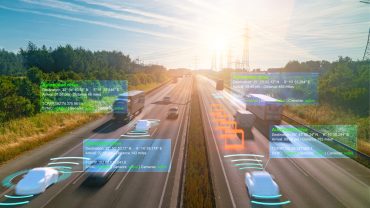
Real-time retail requires a development environment that uses low code techniques and a platform that can easily connect to many data sources.
The proliferation of sensors (RFID and IoT), video systems, the rapid analysis of the data these devices generate is leading to a real-time retail revolution. The integration of data from these multiple systems is transforming retail. It allows retailers to personalize and improve customer engagement, dynamically market and price products, and optimize many back-office functions. This ultimately leads to increased customer loyalty, more customer spending, and higher revenues. However, success depends on having the right platforms in place to build modern apps that make use of the latest technology.
What’s possible? We’re already seeing leading-edge implementations that demonstrate the power of real-time retail. Some customer-centric examples and use cases include:
Smart carts: Smart shopping carts use image analysis and artificial intelligence to identify and bill for items placed in a cart. They let shoppers move about the store as they normally would, placing items in the cart for purchase. The cart is equipped with camera sensors and image analysis and tallies what’s been put in the card. Once done shopping, the shopper leaves and is automatically billed.
Grab and go shopping: This takes similar technologies used in smart carts and extends them to the entire store. Sensors and image analysis identify each item as customers take them off of the shelves. Those items placed into a basket or cart are added to that customer’s bill. The customer does not have to go through check out.
Contactless shopping: COVID significantly drove up interest in contactless retail. There are broad applications areas. One general use is contactless payments, where a customer waves or taps a credit card or smartphone at checkout to complete a sale. Another use is related to merchandise delivery or pickup, where the exchange is made without a direct human-to-human interaction.
Dynamic and interactive displays: Such displays are being used to improve customer engagement, deliver customized sales suggestions, upsell people on the spot, and increase sales. They accomplish this by using location information derived from beacons, near-field communications, RFID, and smartphones and combining other information collected about a customer with predictive analytics to make intelligent recommendations. One example of their use is smart mirrors that let people see what they would look like if they tried a product. Or an aisle display that flashes a special offer to a loyalty club member as they pass by the signage.
Enhanced in-store customer experiences: A wide variety of applications are being used. Mobile apps can provide directories and directions to specific goods. Customers can scan QR codes for pricing and availability information. Some retailers, especially luxury brands, are using augmented reality to provide customers with a wealth of information about their products on store floors.
Back-end needs real-time, too
Most of these applications center on real-time customer engagements. Other real-time retail apps aim at bringing back-end operational systems into the modern world. For example, many retailers have used dynamic pricing for years. Now it is a competitive imperative.
Other critical areas that need a real-time makeover are production operations and supply chains. COVID exposed extreme weaknesses. The pressure is now on companies to have real-time snapshots of what is going on across their production areas and supply chains. And most importantly, companies can no longer take their time rolling out gargantuan systems that take years to deploy.
Increasingly, artificial intelligence and analytics top the list of technology initiatives manufacturers are considering to be more prepared for business disruptions.
Speed and flexibility matter
Real-time retail systems are becoming critical. However, businesses face development challenges due to their complexity, distributed nature, and the need for analysis to be done in real-time.
Adding to the complexity, many real-time systems must use events-based and streaming data. Many businesses do not have expertise in these areas. They must use technologies like Apache Kafka and other platforms that can handle event streaming. Such technology typically has not been widely used in the past.
Additionally, businesses must combine lots of different products and bring together data from many disparate systems, including many owned or managed by third parties. Traditional development methodologies break down under such circumstances. As a result, there has been great interest in and adoption of low-code development methodologies and composable architectures.
Using such tools helps overcome some of the complexity issues related to integrating disparate systems. They also can significantly speed the software development process. That is a differentiator in today’s fast-paced retail marketplace.
Low-code and composable application development techniques help in other areas. Retailers can use these technologies to achieve great flexibility. They can quickly incorporate new technologies, new data, new analytics solutions into their applications.
The bottom line is that retailers need a development environment that uses low code techniques and a platform that can easily connect to many data sources and convert that data into decision-making insights for real-time actions.
Real-time retail benefits
A real-time retail environment can offer improvements in many areas. Most efforts are focused on improving the customer experience and optimizing operations. But secondary benefits abound.
Real-time retail systems can help improve loss prevention, asset tracking, and inventory optimization. Retail staff can use the systems to increase their effectiveness. For example, an associate on a store floor can provide highly personalized help and customized recommendations if they have detailed customer information as a shopper enters their department.
At a higher level, modern real-time applications are helping retailers digitally transform. Such a transformation offers many additional benefits, including the ability to gain real-time visibility into customer behavior, allowing enhanced customer engagements that lead to higher spending, higher retention, and increased loyalty.






